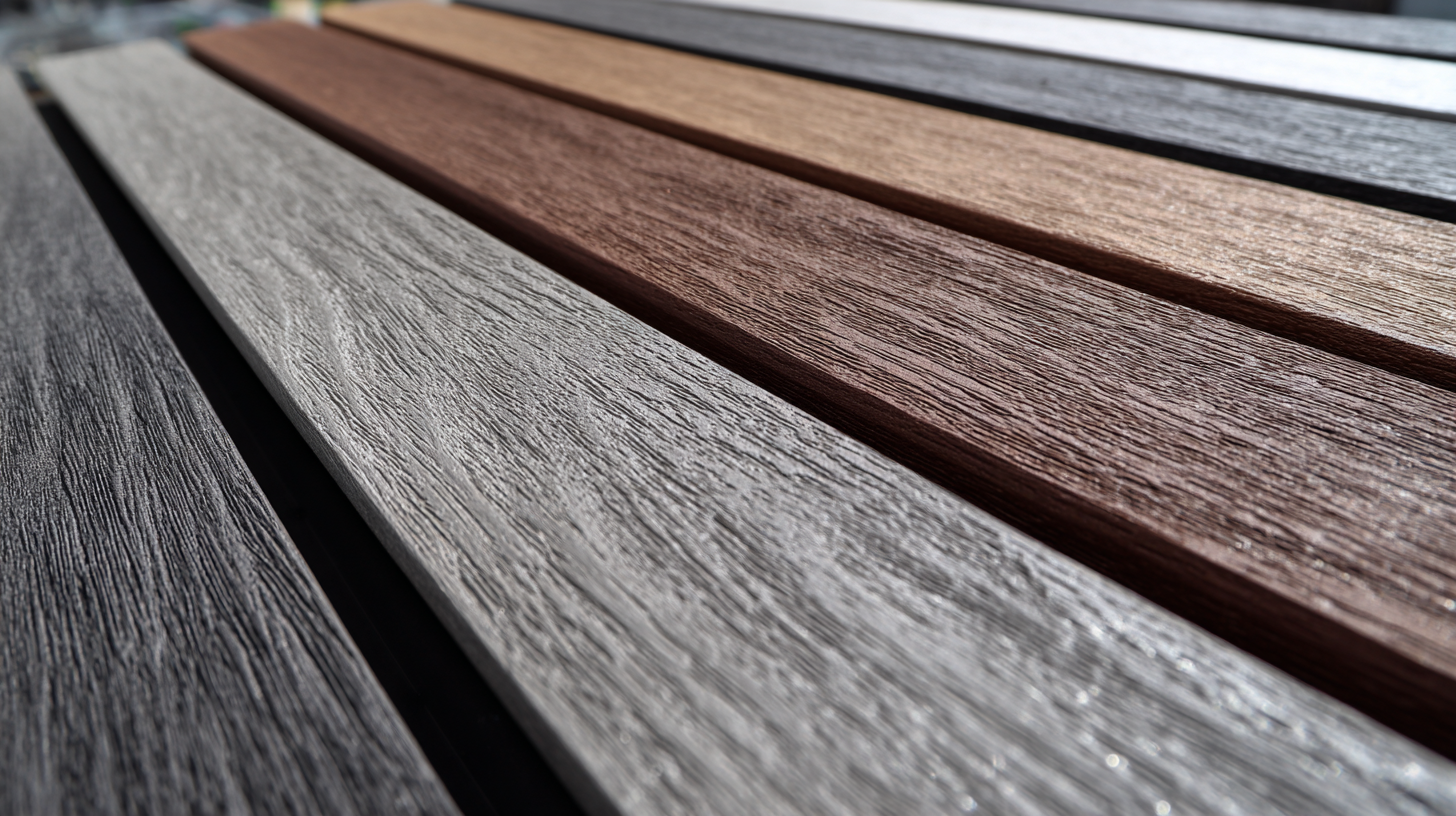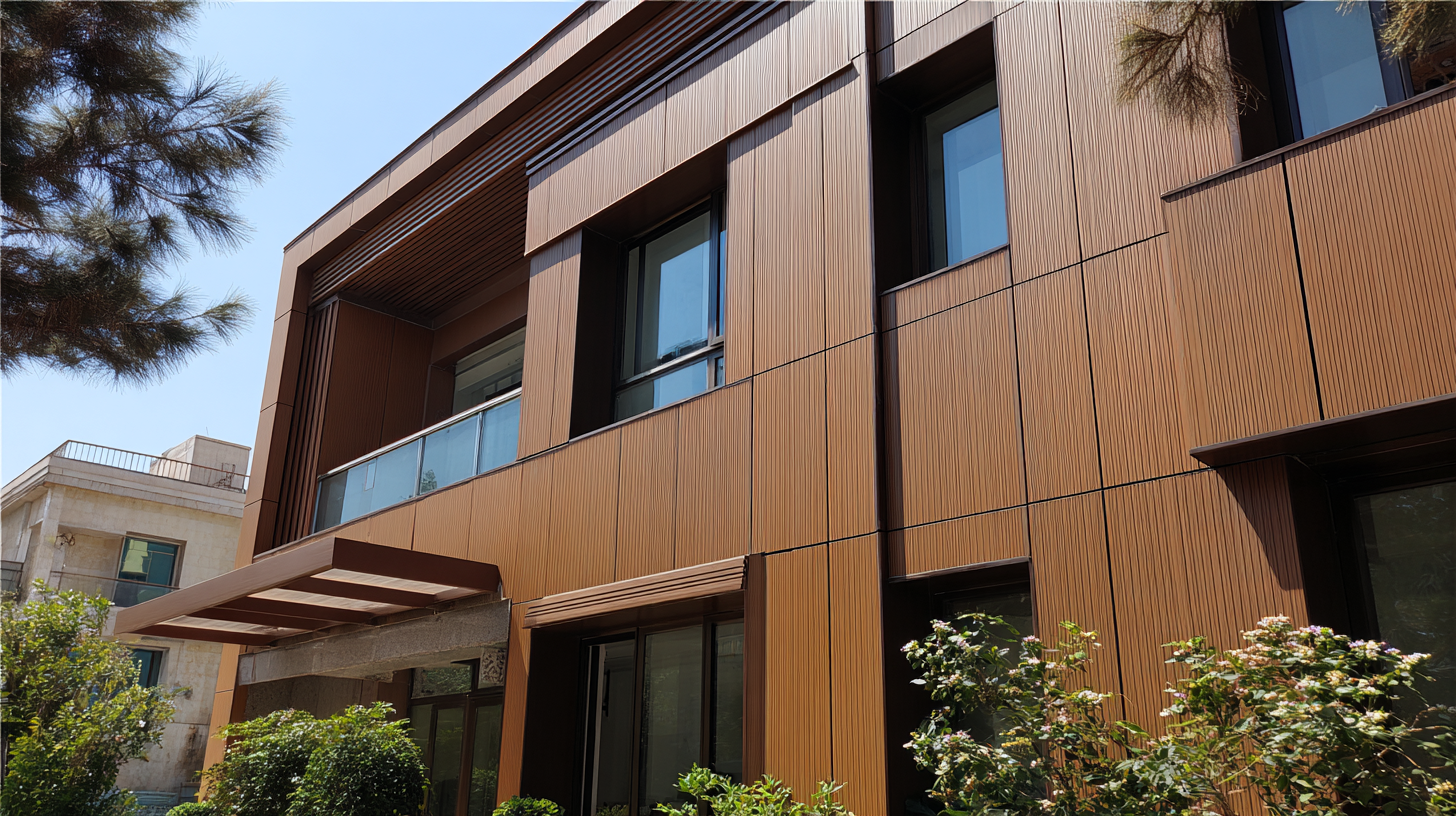Leave Your Message
In recent years, the construction and architectural industries have witnessed a significant shift towards sustainable and innovative materials, with Wpc Cladding Wall Panels emerging as a frontrunner in this trend. According to a report by Grand View Research, the global wood-plastic composites market is expected to reach USD 9.2 billion by 2025, indicating a robust growth trajectory driven by the increasing demand for environmentally-friendly building materials. These composites, combining the durability of plastics with the aesthetic appeal of wood, offer numerous benefits such as resistance to moisture and insects, making them ideal for various applications in residential and commercial settings. As China continues to lead the charge in manufacturing these innovative Wpc Cladding Wall Panels, it is crucial to explore the features, advantages, and market dynamics that position them as a preferred choice for architects and builders worldwide.

The world of architecture and design is constantly evolving, and one of the most exciting developments is the use of Wood-Plastic Composite (WPC) cladding wall panels. These innovative materials are engineered from a blend of wood fibers and thermoplastics, combining the aesthetic appeal of wood with the durability of plastics. This unique composition not only enhances the visual aspect of buildings but also provides superior resistance to moisture, rot, and insects, making WPC an ideal choice for both residential and commercial applications.
The manufacturing process of WPC cladding is a testament to modern ingenuity. By recycling wood waste and plastics, manufacturers are not only creating a sustainable product but also reducing environmental impact. The versatility of WPC allows for various finishes and colors, catering to diverse architectural styles and preferences. Furthermore, these panels require minimal maintenance, which appeals to homeowners and builders alike. As China emerges as a leader in producing high-quality WPC cladding, the global construction industry is increasingly turning to these innovative materials to enhance both aesthetics and functionality in their projects.
| Material Composition | Advantages | Application Areas | Environmental Impact | Lifespan |
|---|---|---|---|---|
| Wood Plastic Composite (WPC) | Durable, Low Maintenance, Aesthetic | Residential & Commercial Buildings, Decking, Fencing | Recyclable, Reduced Deforestation | 25-30 years |
| Recycled Wood Fiber | Sustainable, Cost-effective | Parks, Outdoor Installations, Facades | Minimal Carbon Footprint | 20-25 years |
| Thermoplastics | Versatile, Weather Resistant | Commercial Exteriors, Landscaping | Removable and Reusable | 15-20 years |
The growing emphasis on sustainability in construction has led to the increased adoption of innovative materials like Wood-Plastic Composites (WPC) for cladding wall panels. WPC technology combines the best properties of wood and plastic, offering durability and aesthetic appeal while minimizing environmental impact. Using WPC in construction not only reduces the demand for natural wood, thereby conserving forests and biodiversity, but it also utilizes recycled materials, which contributes to waste reduction.

Additionally, WPC panels are designed to withstand various weather conditions without warping or fading, leading to longer lifespans and lower maintenance costs. By opting for WPC, builders can significantly decrease their carbon footprint, as its manufacturing process generates fewer emissions compared to traditional materials. The shift towards WPC also reflects a broader commitment to environmentally-friendly practices in the construction industry, highlighting how innovative materials can create beautiful, functional structures while promoting sustainability.
Wood-Plastic Composite (WPC) cladding has emerged as a robust alternative to traditional materials due to its durability and lower maintenance requirements. According to a report by ResearchAndMarkets, the global WPC market is projected to grow by 13.7% annually through 2027, reflecting its rising popularity among builders and homeowners. WPC panels resist rot, corrosion, and weather damage, significantly extending their lifespan compared to wood and metal cladding, which often require frequent replacement or repairs.
One major advantage of WPC is its minimal maintenance. Unlike traditional wooden panels that need periodic sealing and staining to maintain their appearance and integrity, WPC requires only occasional cleaning with soap and water. This not only saves time and effort but also reduces long-term costs. A study by Freedonia Group suggests that using WPC can lower maintenance costs by up to 50% over its lifespan.
Tips for choosing WPC cladding include selecting products with a high percentage of wood fiber, as these offer enhanced aesthetic appeal and tactile quality. Additionally, look for WPC panels that have been tested for UV stability and color retention to ensure that the cladding maintains its original hue even after years of exposure to the elements. This proactive approach will ensure that homeowners enjoy the beauty and benefits of WPC cladding long into the future.
The design versatility of WPC (Wood Plastic Composite) cladding wall panels makes them an ideal choice for modern architecture, seamlessly blending functionality with aesthetic appeal. Available in a variety of colors, textures, and finishes, WPC cladding allows architects and designers to express their creativity while ensuring durability and low maintenance. Whether aiming for a sleek, contemporary look or a warm, rustic feel, WPC panels can be tailored to meet diverse design requirements.
Moreover, the innovative manufacturing processes employed in China have revolutionized the production of WPC cladding, ensuring high-quality materials that withstand environmental challenges. This not only enhances the visual aspects of a structure but also contributes to its sustainability. WPC cladding is environmentally friendly, as it can be made from recycled materials, and offers superior resistance to moisture, insects, and weather extremes. This combination of beauty and resilience makes WPC cladding an attractive choice for modern architectural projects looking to push the boundaries of design while adhering to sustainable building practices.
When it comes to cost-effectiveness in construction, WPC (Wood-Plastic Composite) cladding wall panels from China are leading the way. Builders and homeowners are increasingly turning to WPC panels not only for their aesthetic appeal but also for their long-term savings. These panels are lightweight and easier to install compared to traditional materials, which can significantly reduce labor costs. Additionally, they require less maintenance over time, translating to further savings on upkeep.

Tip: When selecting WPC panels, look for options with high durability ratings and warranties. This ensures that your investment is protected against wear and tear, making them a wise choice for any project.
Furthermore, WPC panels are resistant to common issues like rot and insect damage, making them an ideal option for various climates. Their energy efficiency also contributes to lower heating and cooling costs, benefitting both builders and homeowners.
Tip: Consider purchasing WPC panels during off-peak seasons to take advantage of lower prices and discounts. This strategic buying can maximize your overall savings while enhancing the quality of your construction project.

